The Robertson Long Bay System®: Revolutionizing Steel Building Design
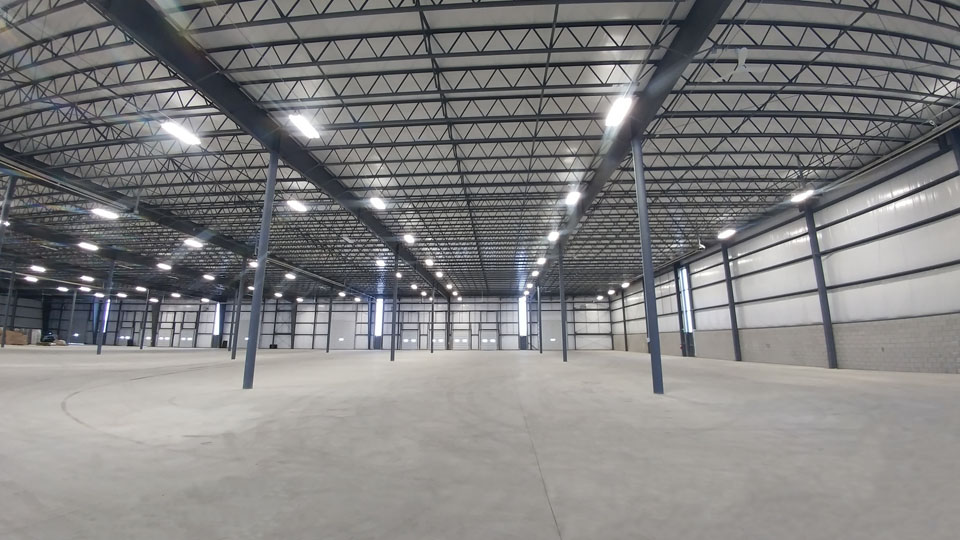
The Robertson Long Bay System®: Revolutionizing Steel Building Design
Robertson Building Systems has brought forth a solution that caters to projects demanding large spaces with open floor plans: the patented Long Bay® System (LBS). When it comes to delivering uninterrupted space along with the advantage of a considerable architectural design flexibility, LBS stands out.
Understanding the Long Bay System
The LBS relies on the open web truss secondary framing, an ingenious design choice that offers dual benefits. Firstly, it provides strong roof support. Secondly, it considerably reduces the time taken for the installation of mechanical and electrical systems. With compatibility across multiple wall and roofing systems, LBS extends the construction design potential to a significant degree. Furthermore, this system finds perfect application in manufacturing, distribution, and retail & community spaces that require expansive interior spaces.
In the dynamic realm of construction, where unexpected challenges are not uncommon, the Robertson Building Systems team offers a unique advantage. We possess direct control over the design, fabrication, and scheduling for LBS, ensuring that inconsistencies and potential delays to the jobsite are minimized. This level of control ushers in a streamlined process throughout the entire building design and erection phase. Notably, from an engineering standpoint, LBS presents a commendable alternative to the traditional 12″ Z-purlins. While Z-purlins often need to be longer than the bay, causing potential handling issues, LBS can be precisely the size of the bay. Furthermore, based on specific codes and loads, the weight per foot of LBS can be lighter than a Z-purlin. This can lead to cost savings and also reduce labor requirements due to its ease of handling.
The design intricacies of the LBS present another merit. Instead of the traditional welding, Long Bay purlins are bolted to the rafter. This method slashes the horizontal bridging by a significant 50% as compared to a bar joist. Moreover, instead of welding, horizontal bridging is achieved using self-drilling screws. An added advantage of bolting is the feasibility it offers to the erector. Materials can be connected on-ground and lifted in sections during the installation phase, leading to noticeable labor cost savings. This not only accelerates the project speed but also elevates on-site safety standards.
When it comes to size specifications, the LBS offers flexibility, available in bays ranging from 40’ to 60’. The LBS patented geometry creates lateral stability in a lightweight design that’s easier to erect than a traditional bar joist, while easily interfacing with load-bearing masonry or tilt-wall constructions for a faster, precise installation. The result? A structure that is easy to manage, maneuver, and erect, without the issues of warp or sweep.
Distinctive Features of the Long Bay System
- Size Range: Offered in bays of 40’ up to 60’.
- Attachments: Features bolted end seat attachments.
- Build: LBS members come with a solid top surface, which simplifies the attachment of other components. This design contrasts sharply with traditional bar joists, which feature a void in the top surface. When using bar joists, installers must ensure that any fasteners penetrate the solid angle bar, avoiding the open void, a process that can add complexity and potential pitfalls to the installation. Additionally, LBS is both stiffer and lighter than traditional bar joists, providing further advantages in construction.
- Composition: Fabricated from light-gauge cold-rolled steel having a 4″ chord width and a seat depth of 5″.
- Compatibility: Harmonizes with mechanically seamed standing seam metal roof systems, B Deck, Built-Up, Single-Ply, and Multi-Ply roofing systems; web patterns available to accommodate ESFR sprinkler systems.
Benefits of Using Long Bay System
- Cost Efficiency: Notable savings from reduced foundation costs and simplified erection.
- Design Flexibility: Fewer footings and interior columns, compatible with multiple wall and roofing systems.
- Handling: Easy to handle, move around, and erect without any warp or sweep.
- Assembly: Panels use self-drilling screws and have the capability to bolt to the mainframe, eliminating field welding.
- Construction Ease: Efficiently interfaces with load-bearing masonry or tilt-wall construction and assures a faster, more precise installation.
The Long Bay System: A Masterpiece in Open-Concept Designs
LBS from Robertson Building Systems signifies a marriage of innovation and efficiency. It’s a sophisticated solution tailored for complex open-concept designs. Entrusted by countless Canadian experts, it is reshaping the standards of steel building designs.
For those who wish to delve deeper, we recommend downloading our comprehensive Long Bay® brochure. Experience the future of steel building with Robertson’s Long Bay System®.
Robertson 2021 Photo Award Winners!

We are excited to announce Robertson’s 2021 Photo Award Winners!
Every year we call on our authorized builders to submit their best projects of the year for an opportunity to earn some well-deserved recognition of your brand and your amazing work. The submissions we saw this year were spectacular and keep raising the bar for the metal building industry.
Thank you to all the participants and congratulations to the winners!
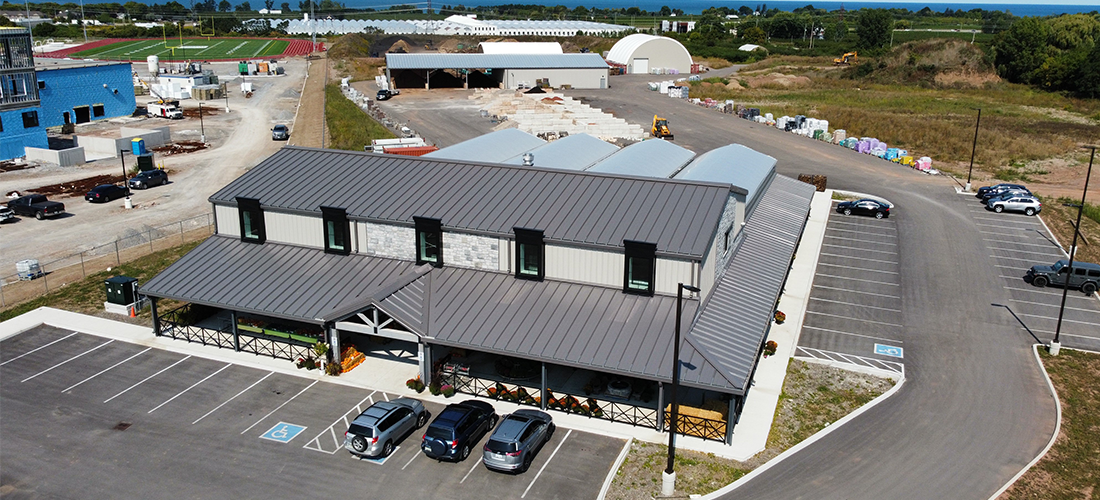
Robertson’s 2021 Building of the Year
The winning project is the Ridgeview Garden Centre by Design Construct Solutions in Beamsville, Ontario.
Ridgeview Garden Centre has been a staple of Beamsville, ON for over 25 years, along with a deep family legacy of care and support. DCS was selected to construct their new space to continue the strong bond with the people of Beamsville. The building uses organic materials like stone and wood to bring the steel buildings to life. Glass roll-up doors and large covered canopies provide a seamless transition between interior and exterior spaces in the building.
Framing: Clear Span Building, Single-Slope with Tapered Columns
Roof: Double-Lok in Charcoal Gray
Walls: PBR in Ash Gray
Size: 14,840 sq. ft, 2 buildings
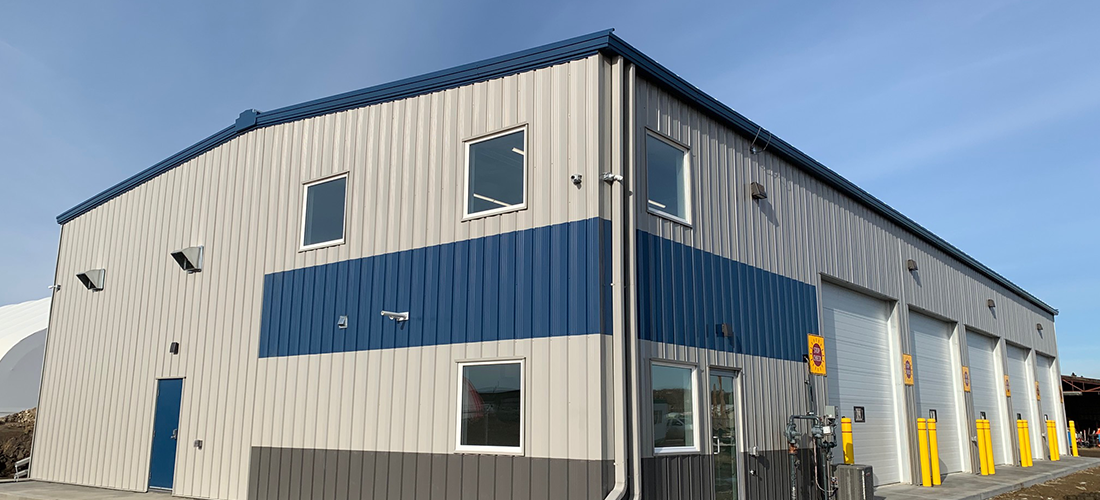
Automotive Category Winner
The winning project is Ledcor Highways by Camdon Construction in Beaverlodge, AB.
This building is a highway maintenance shop and office. Construction began in June 2020 and ended January 2021.
Framing: Clear Span Building, Single-Slope with Tapered Columns
Roof: Double-Lok Panels, Galvanized
Walls: AVP in Ash Gray and Blue
Size: 6,600 sq. ft., 1 building

Commercial Category Winner
The winning project is the Ridgeview Garden Centre by Design Construct Solutions in Beamsville, Ontario. This project also happens to be our 2021 Building of the Year!
Ridgeview Garden Centre has been a staple of Beamsville, ON for over 25 years, along with a deep family legacy of care and support. The Robertson builder was selected to construct their new space to continue the strong bond with the people of Beamsville. The building uses organic materials like stone and wood to bring the steel buildings to life. Glass roll-up doors and large covered canopies provide a seamless transition between interior and exterior spaces in the building.
Framing: Clear Span Building, Single-Slope with Tapered Columns
Roof: Double-Lok in Charcoal Gray
Walls: PBR in Ash Gray
Size: 14,840 sq. ft, 2 buildings
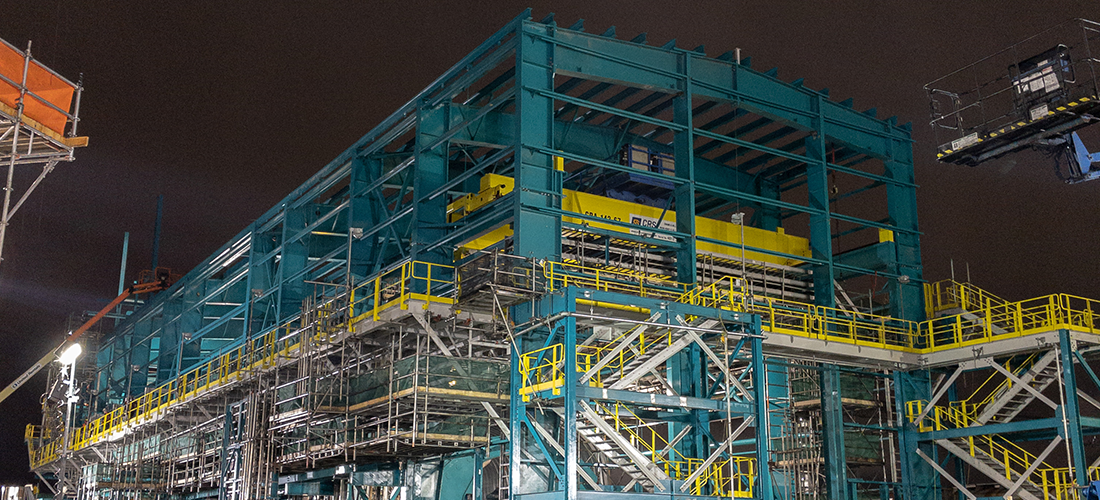
Manufacturing Category Winner
The winning project is Neptune Bulk Terminals by Powerhouse Management Group, Inc. in North Vancouver, BC.
This building at Neptune Bulk Terminals in North Vancouver, BC houses a Tandem Rotary Dumper system designed for dumping Coal train cars which sits upon a 85′ deep dumper vault housing conveyors, crushers, & other mechanical instrumentation. The building was also designed to house a 65 Ton bridge crane with alternate 15-ton air hoist which spans the entirety of the building.
Framing: Clear Span Building, Double-Slope with Tapered Columns
Building size: 12,000 sq. ft.
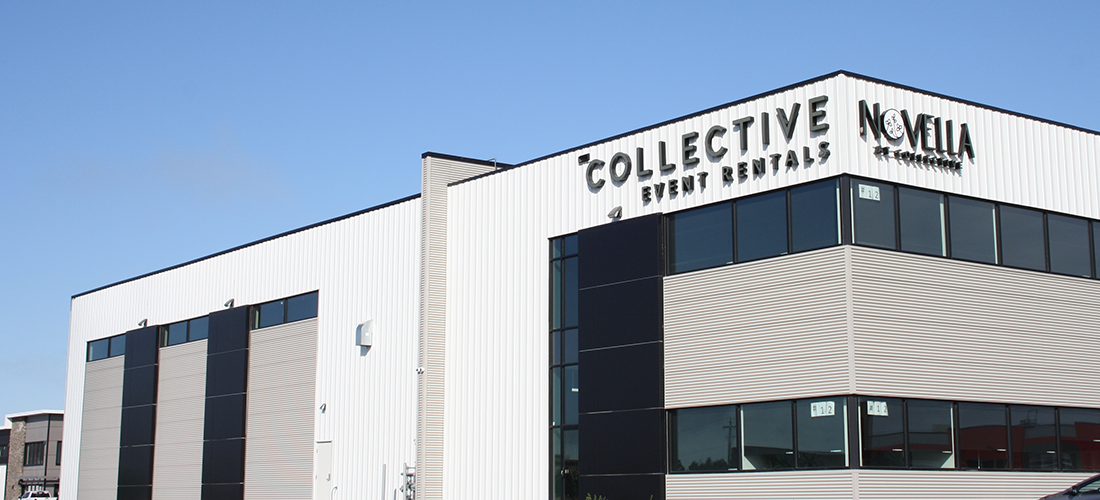
Office Category Winner
The winning project, a warehouse and office facility, is Collective Entertainment Events Centre by Thomas Design Builders in Oak Bluff, MB.
This building for Collective Entertainment Events Centre is a 15,000 sq. ft. PEMB warehouse and office using Robertson Long Bay joists. The project began construction in August 2020 and ended July 2021.
Framing: Multi-Span Building, Single Slope with Tapered Columns
Roof: Double-Lok in Galvalume Plus
Walls: AVP in Polar White
Size: 15,000 sq. ft., 1 building
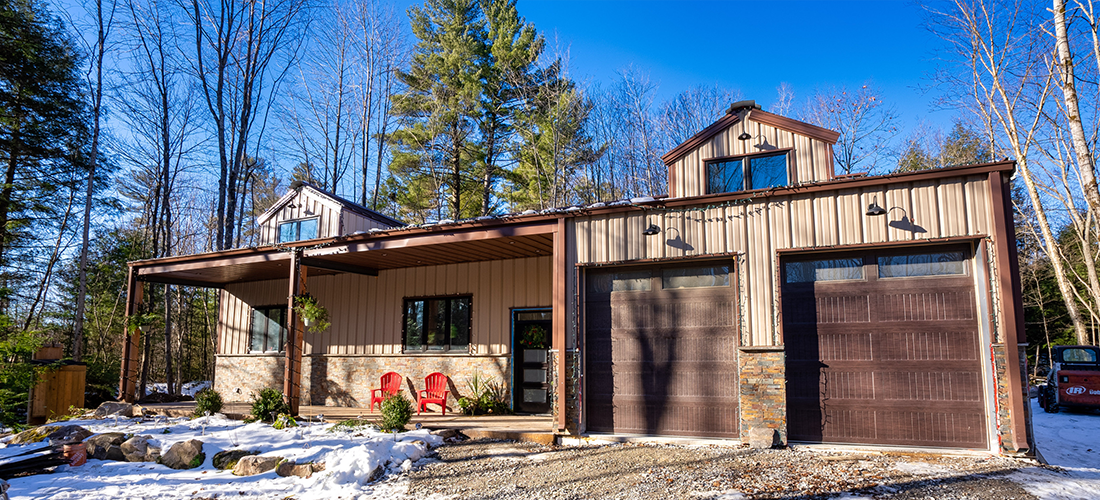
Recreation Category Winner
The winning project is the Travis House by Kodiak Steel Buildings in Norland, ON.
This building is being used as a home in Norland, ON. The project includes an interior mezzanine and has 3 bedrooms and 2 bathrooms. Construction began in January 2020 and ended in May 2021.
Framing: Clear Span Building, Double-Slope with Straight Columns
Roof: Ultra-Dek in Koko Brown
Walls: AVP in Saddle Tan
Size: 2,800 sq. ft., 1 building

Retail & Restaurant Category Winner
The winning project is the Ridgeview Garden Centre by Design Construct Solutions in Beamsville, Ontario. This project also won the 2021 Robertson Building of The Year and Best of the Commercial Category!
Ridgeview Garden Centre has been a staple of Beamsville, ON for over 25 years, along with a deep family legacy of care and support. The Robertson builder was selected to construct their new space to continue the strong bond with the people of Beamsville. The building uses organic materials like stone and wood to bring the steel buildings to life. Glass roll-up doors and large covered canopies provide a seamless transition between interior and exterior spaces in the building.
Framing: Clear Span Building, Single-Slope with Tapered Columns
Roof: Double-Lok in Charcoal Gray
Walls: PBR in Ash Gray
Size: 14,840 sq. ft, 2 buildings
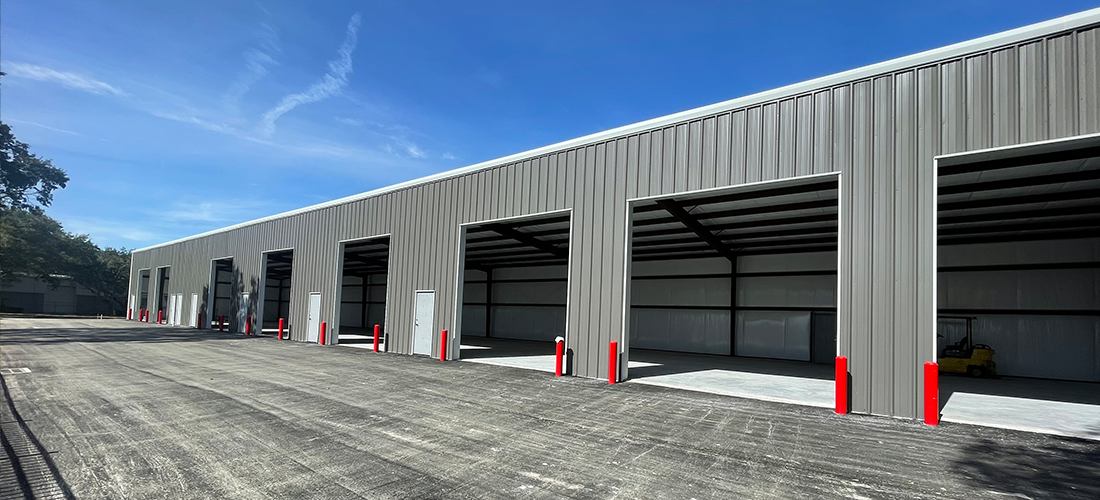
Storage Category Winner
The winning project is Commercial Storage by Kodiak Steel Buildings in Dunedin, FL.
This building is being used for commercial storage in Dunedin, FL and includes R20 roof and wall insulation. Construction began in April 2021 and ended in July 2021.
Framing: Clear Span Building, Single-Slope with Tapered Columns
Roof: PBR in Galvalume
Walls: PBR in Charcoal Gray
Size: 9,000 sq.ft., 1 building

Warehouse and Distribution Category Winner
The winning project, a warehouse and office facility, is Collective Entertainment Events Centre by Thomas Design Builders in Oak Bluff, MB. This project also won our Best of Office Category!
The building is a 15,000 sq. ft. PEMB warehouse and office using Robertson Long Bay joists. The project began construction in August 2020 and ended July 2021.
Framing: Multi-Span Building, Single Slope with Tapered Columns
Roof: Double-Lok in Galvalume Plus
Walls: AVP in Polar White
Size: 15,000 sq. ft., 1 building
Mining. It’s in Our Veins: Robertson and the Canadian Mining Industry.
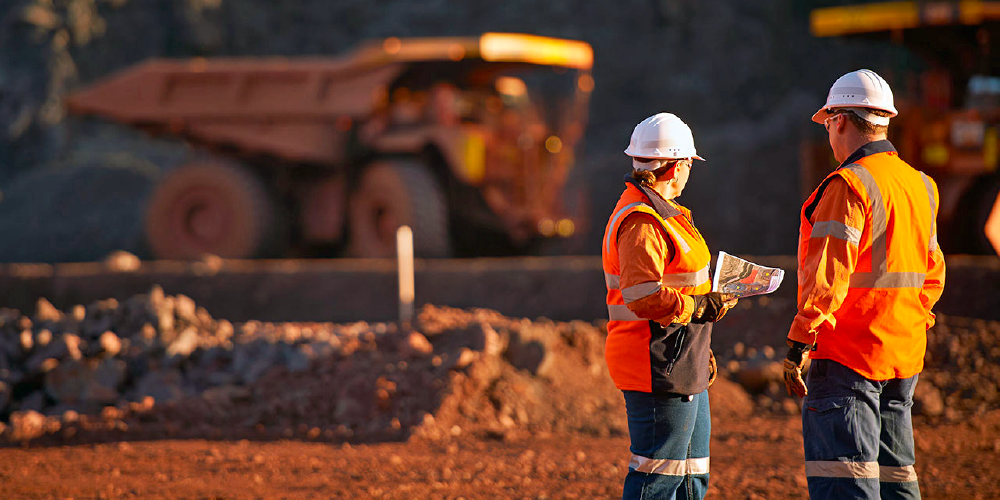
Canada is one of the world’s most important suppliers of metals and minerals. In fact, according to the Mining Association of Canada, we’re among the top five countries worldwide in the production of 17 of these crucial materials, from potash, uranium, nickel, and cobalt to the rare earth elements like lithium and graphite that make a greener, more sustainable world possible. Minerals and metals coming from Canadian mines are valued around the world for production of products as diverse as buildings, electronics, toothpaste, vehicles, and solar cells.
State of Mine
As crucial as Canada’s mining industry is to the world, it’s just as important to Canada. Mining contributed $109 billion – 5% of the nation’s GDP – in 2019. That’s up from $87 billion just three years earlier. Likewise, this critical industry provides employment for some 719,000 Canadians – one in every 26 jobs. Mining provides exceptional income, too, with average annual per-job compensation above $115,000. While this critical industry has the potential to be hazardous, mining companies in Canada have maintained one of the safest jurisdictions in the world.
Mining is serious business in Canada. It’s important to our country, our citizens, and the world at large. There is a lot at stake, too – not just returns, income and GDP, but jobs, reputations, safety, the environment, and lives. For many years, Robertson Building Systems has been a proud partner in the Canadian mining industry. We understand better than anyone that in such a critical industry, with so much at stake, everything must not only be done on time, it also must be done right. It must be done to spec and within code, because it’s more than a matter of profit and loss – it can be a matter of life and death.
Expert Seekers: Seek no Further
Robertson’s approach to its relationship with every industry is to become experts in its specific needs and requirements. Mining has heavy-duty specifications and requirements –all of which must be delivered on. As Robertson District Manager John Gelms explained, “The mining industry hires highly experienced consultants that review every aspect to the operation of every custom building and prepare a design and tender package of the building”.
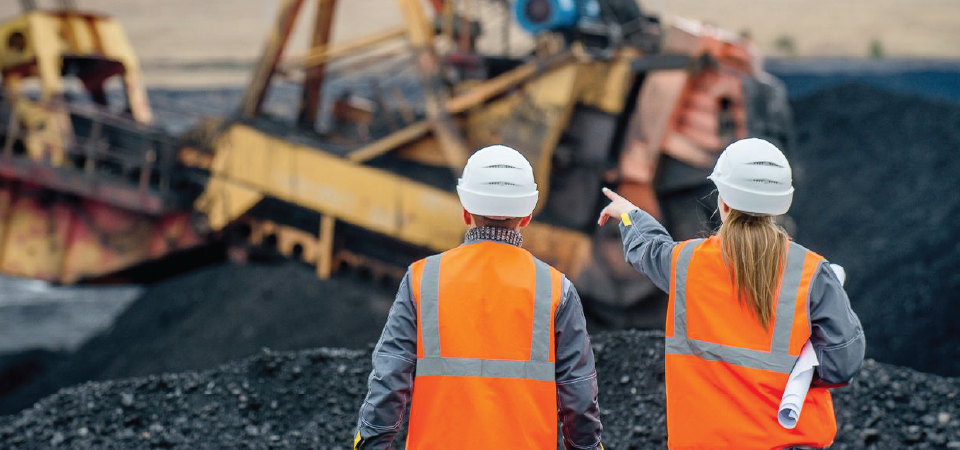
Into the Wild
Typically, a mining company doesn’t just need a building. They’re pushing back frontiers into remote parts of the country, where little infrastructure and support exists – but an endowment of subterranean metals or minerals beckons. “They have to build almost an entire town,” Robertson regional sales manager James Austin said, “setting up everything from water treatment centers, warehousing, hoist and processing buildings along with office buildings. Large machinery has to be warehoused.”
That new town needs to be built from the ground up. It needs to be built quickly and must be tough enough to stand up to climatic extremes, from negative 40°C in the winter to 30°C in the summer. Gelms pointed out that mining also requires taller buildings than other industries, “Process buildings or Headframe buildings are normally 80 to 100 feet tall.”
Demanding Specs
To put it in simple terms, mining companies need to erect a small, industrial town in remote parts of a challenging wilderness. They need it done efficiently, done right, and done in a way that can stand up to the rigorous demands of mining, its heavy-duty machinery and corrosive environments.
Metal construction has long been seen as an ideal answer to these challenges. “Metal buildings are very appealing because of the open concept,” Austin said. “They go up quickly.” With the inclusion of innovative products such as insulated metal panels (IMPs), this efficiency is further expedited. With a foamed-in-place core surrounded by heavy gauge steel, IMPs provide superior thermal properties and insulation, while providing air, water and vapor barrier in an all-in-one product which is installed in a single, simple step. “The insulated metal panel is a one-stop shop, which is very convenient to put up,” said Austin.
Coordination
However, we’re fully aware metal construction isn’t the only player in the game. “The metal building is only one portion of the project,” Austin pointed out. “There’s all the other trades. The metal building is usually one of the first things that gets put up, so if there’s a delay in its schedule, you’re going to have a big problem. Mining schedules are extremely important,” said Austin. “Your specifications and timelines need to be met.”
High Stakes
With critical specifications and timelines, immense project size and scope – and a lot riding on all of it – mining companies can’t afford to take chances with fly-by-night or newcomer operations. They need a partner as old as the Canadian mining industry. A partner like Robertson.
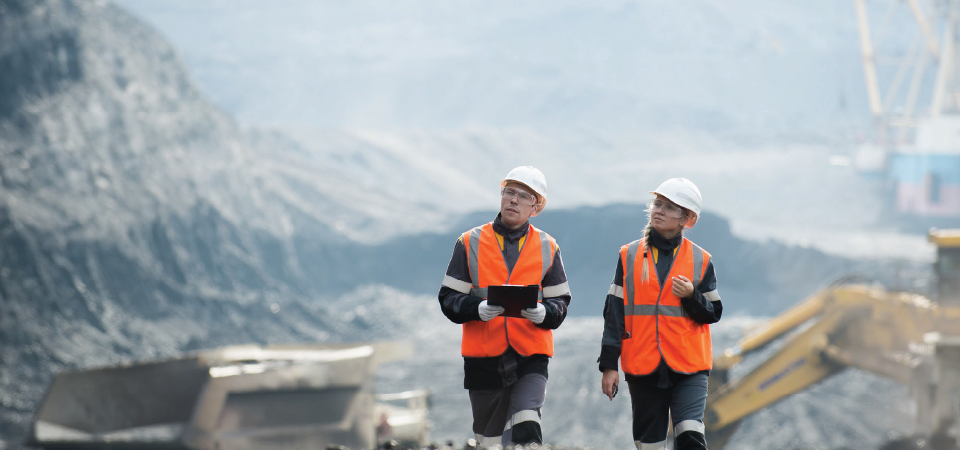
Bet on the Best
Robertson Building Systems has a history with roots as old and deep as the timbers supporting Canada’s historic gold mines. We’ve been in the construction industry since 1863. “With its background and expertise, Robertson is able to look at these very customized specifications and drawings, interpret what is required and use its design software and expertise internally to provide a building that accommodates what’s required,” Gelms said. “Robertson has the expertise, the steel, they have the schedules, they have the right engineering team to be able to meet all the specs,” Austin added. “They get the price, they get the availability of the product, and they get the correct engineering and design of the product – which meets the specifications.”
A Load Off Your Mine
Robertson delivers on every aspect of metal construction for mining. “We’ve got the structural fabricating plants,” Gelms said. “Our factories are certified as per CSA-A660, Canadian Welding Bureau (CWB) and IAS AC472. The IAS AC472 audit is a complete audit reviewing processes, quality and procedures for metal building manufacturers”. Robertson steel can also be made to withstand the harshest environments, with hot dip G-90 galvanizing on 8, 10 and 12-inch purlins and girts. Robertson’s structural steel can also be Hot Dip Galvanized or epoxy coated to withstand corrosive environments.
We’re ready meet every challenge Canada’s climate and the mining industry has – and to do it on time, in spec and with durability that’s sure to outlast us all. When you’re ready, get in touch with a Robertson representative.
Energy Efficiency Between Light & Dark Panels
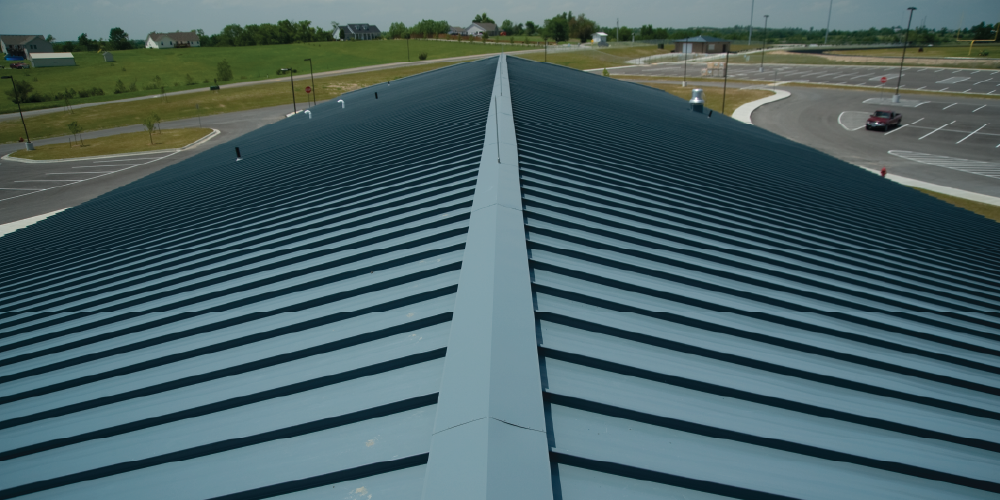
Making Earth-Friendly Choices A Priority In Construction
A recent press release from EY Canada, regarding the growing emphasis of Canadians on sustainability, announced that “…the majority of Canadians are pivoting to a more sustainable way of living, as over half are spending more time at home and focusing on saving their hard-earned dollars.” This applies to the desire for energy-efficient, eco-friendlier options when it comes to construction decisions, as well. And while that’s good news for the environment and the future for all of us, it doesn’t come without conflict. According to the release, “Most consumers (61%) plan to pay more attention to the environmental impact of what they consume, but 64% intend to focus on more value for money – creating a tension over who should pay for sustainability.”
As all of us in the construction industry look to find ways to offer customers greater energy efficient options without a lot of added cost, it’s good to know that technology is advancing along with demand, making it more convenient and simpler than ever before to make green construction a priority, not just a luxury.
Before any construction begins, a lot can be done simply by selecting the best building materials – especially the roof. The types of materials used make a significant difference in how well the building works with the environment to control temperatures and take the pressure off heating and cooling units. Additionally, colour choice can play an equally significant role in regulating the temperature. While darker exterior colours naturally absorb more energy from the sun, lighter colours work harder at reflecting both the light and its heat. Metal in general is naturally highly efficient at transmitting temperature – and making a smart colour choice that is suited for the climate in your area only enhances that effect.
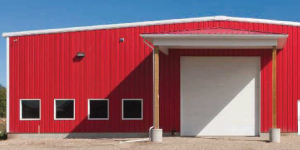
Just how much roof colour plays into affecting the temperature and energy efficiency of the building depends largely on two factors: solar reflectivity and thermal emissivity. Solar reflectivity (SR) is the ability of a material to reflect the solar energy from its surface back to the atmosphere, and thermal emissivity (TE) is the ability of the material to release absorbed heat. Buildings are assigned numerical SR and TE values – and the combination of their values, known as the Solar Reflectivity Index (SRI) is evaluated for compliance with local energy codes and LEED requirements. Local energy codes will be determined largely based on local climate, which in turn affects regulations on roof slope and other features of the building, such as insulation, window type and area, lighting, and more.
As a general rule, roofs with dark colours have been shown to absorb up to 90% of energy from solar rays. This translates into excess energy being transferred to your building’s interior, consequently causing air conditioning systems to work overtime. But a light-coloured roof can reflect, on average, 60% of sunlight and sometimes more – keeping your building cooler more efficiently. Additionally, the switch can result in average energy savings that can range from 7-15%. Cost and energy savings vary of course, depending on factors such as the size of the project, local climate, and how roof access is designed.
A lot of the energy-saving power of cool paint colours have to do with their makeup. Cool paint colours are made with cool paint pigments that have been chemically and physically altered to reflect infrared wavelengths while absorbing the same visible light. The pigments are designed specifically to minimize the build-up of excess heat. This process has also been shown to help mitigate Urban heat islands (UHIs) – a rising concern across Canada, due to the effects of climate change in addition to the growing number of Canadians now living in urban settings.
And in addition to all the benefits of cool colours on your metal roof, don’t forget that no matter the shade of paint you choose – your metal roof is always green. Exceptional energy efficiency is just one of the environmentally friendly benefits of metal building construction:
- Not only are metal roofs more durable and long-lasting, they are made from recycled content and can also be recycled once they do reach the end of their lifespan – creating a significant reduction in the amount of construction material that ends up in landfills.
- Metal roofs are easily compatible with solar panels, creating even more energy savings. With conventional roof systems, the expected lifespan of the roofing materials is often much shorter than that of the solar panels. Consequently, the panels must be removed while the roof is replaced and reinstalled once complete, resulting in added installation costs. But with the long lifespan of metal roofing, solar panels are unlikely to outlast them – therefore eliminating the need to remove and reinstall. And speaking of installation, it’s a much simpler process with metal panels. There are a variety of mounting options available that make it possible for the solar panels to be installed directly on the metal panels with no need to drill or create holes in the roof.
- Metal roofing is also a compatible fit for high-efficiency windows and skylights, offering easier installation and increased energy savings.
- The longevity and durability of a metal roof is nearly impossible to beat. With an average lifespan expectancy of 50 years or more and the ability to withstand extreme weather conditions, metal roofs require fewer repairs and replacements.
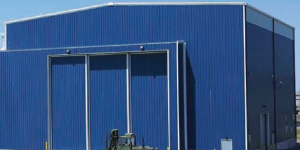 As the demand for construction that’s good for the earth and friendly for the budget continues to grow with Canadian consumers, you can trust Robertson Building Systems as your partner for quality materials that deliver on quality and stand apart in smart, energy efficient design.
As the demand for construction that’s good for the earth and friendly for the budget continues to grow with Canadian consumers, you can trust Robertson Building Systems as your partner for quality materials that deliver on quality and stand apart in smart, energy efficient design.
Up on the Rooftop: Preparing Roofs for Winter Loads
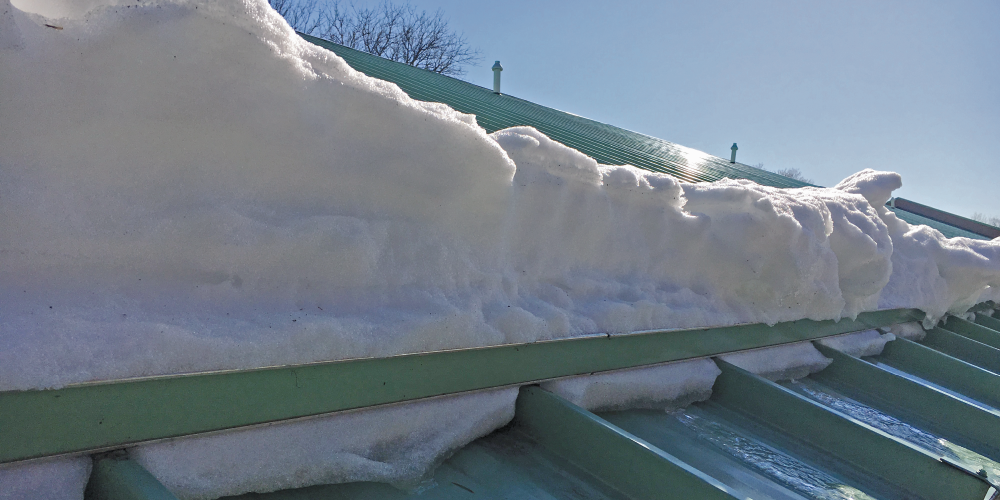
Winter weather will be upon us before you know it, and with it will be the stresses on buildings, infrastructure and roofs. Whether you’re a recent transplant or have been in Canada all your life, brushing up on the basics of winter loads ahead of the coming storms is sure to be smart.
A Matter of Live and Dead (Loads)
Structures are engineered to handle two primary types of loads: Live loads and dead loads.
Dead loads are the continuous, resting loads of the building – the weight of the structure and everything in it.
Live loads are the variable, temporary forces that a structure must resist. These include wind, rain, snow and ice. According to the National Research Council of Canada, a roof should be able to handle 21 pounds per square foot (22 in Alberta) of additional snow and ice live load.
The wide variety of climates in Canada makes for a similarly wide variety of snowfall amounts and consistencies across the nation. The range of snowfall weight – and therefore its strain on a roof – can be surprising. Snow weight depends on two primary factors. First, the amount of snow obviously determines the amount of weight on a roof. But even more important is the water content of that snow.
Powdery to Packed
While a foot of light, airy snow can weigh just a few pounds per square foot, wetter, packed snow can weigh nearly ten times as much. That means a few inches of packed, wet snow puts as much strain on your roof as many feet of light snow. But a single inch of ice can weigh a staggering 5 pounds per square foot. When you measure the accumulation on your roof, it’s crucial to be aware of how wet, packed and icy the snow is.
It’s also important to understand that your roof is an ever-changing, dynamic place. Snow typically doesn’t settle on it evenly in all places and stack up nicely. Different roof details, angles and wind patterns might result in a roof with a foot of snow in most areas, but a large, packed drift in one area. That uneven live load could be the straw that breaks your ridgeline’s back.
Ice Dam Dangers
If the roof itself is warmer than the air around your roof – due to ventilation leaks or other thermal breaks such as chimneys or exhaust – this can cause snowmelt on the roof itself. Melted snow runs down the roof to a colder area and re-freezes. This process can repeat itself, forming the dreaded ice dam.
The ice dam’s rim of ice traps water and snowmelt behind it, creating tremendous extra weight and forcing water up through any imperfections or gaps in your roof – even pinhole-sized ones. This can cause extensive water damage to ceilings, walls, insulation and building contents. It may sound counter-intuitive, but keeping your roof cold helps prevent ice dams from developing.
To accomplish this, you need continuous, high-performing insulation keeping your attic or roof cool. “Robertson has our own patented Robertson Thermal System to meet even more stringent thermal requirements,” explained Lou DiNardo, Robertson technical review manager. “In addition to conventional insulation, we have insulated metal panels that are very popular and capable to meet thermal requirements.” Both of these systems not only protect against the formation of ice dams, but also provide superior year-round thermal performance.
Snowfall to Snow Fall
All that snow on the roof has to come down one way or another. If conditions allow it to slide off on its own, this can be dangerous. Hundreds of pounds of snow sliding at once can shear off rooftop equipment and chimneys. Worse still, it could slide off onto someone, causing serious injury. Robertson’s ColorGard and X-Gard systems may require one or two rows of snow guards, depending on the amount of snow accumulation. These systems not only help protect people and surroundings but also keep eavestroughs from being torn off the eaves.
An Ounce of Prevention
Much of the prevention of dangerous rooftop winter loads is a matter of good design. Roofline shapes in relation to prevailing winds can drastically affect snow accumulation. “We design our buildings to have capacity for the snow loads per the building location,” said DiNardo. “However, roof slope and geometry can help mitigate the loads.” Complex rooflines accumulate more snow than simpler roofs like straight, single-ridge gable roofs, which shed snow and ice more quickly.
Wind can create drifts around dormers, valleys and chimneys. But a row of evergreen trees planted on the windward side of the building can create a windbreak. Pitch and simplicity also play an important role. “By increasing the roof pitch and considering the eave height based on any adjacent structures, we can best determine how to manage snow loads,” DiNardo said.
A Pound of Cure
While codes, loads and structure design are all intended to make buildings that can stand up to the elements, sometimes storms throw more at them than they can handle. Sometimes we inherit a building design that perhaps isn’t ideal for winter storms. In these cases, our roofs need our help.
Gradual shedding of snow and ice is the best approach. Roof rakes are a good solution to aid in this shedding but be sure to choose a rake with rollers or bumpers on the bottom to avoid damaging the roof. Shoveling is another solution but is hazardous and best left to professionals. Be sure shovelers don’t leave footprints of packed snow on the roof – these are a recipe for ice dam creation.
Another smart idea is to install heat cables in gutters that don’t drain well – or those that are prone to freezing up and blocking drainage. These can help move damaging water off the roof safely.
Best of Luck!
We hope these tips help keep you and your structures warm, safe and happy this winter. If we can help with anything at all, please don’t hesitate to reach out to your Robertson representative.
The Builder is the Building Finding the Right Builder
 Let’s talk about building. But let’s not talk about where, when or what you want to build. Makes sense, right? Actually, it makes more sense than you think. Stay with me.
Let’s talk about building. But let’s not talk about where, when or what you want to build. Makes sense, right? Actually, it makes more sense than you think. Stay with me.
The most important factor in making sure the where, when, what and how go smoothly is making sure you pick the right who. Because picking the right builder isn’t just another decision in the process – it’s the decision that will make or break the process altogether.
The right builder is the builder who is working long before any building begins. They are taking care of the less obvious, yet critical things like dirt work, plumbing, slab work, concrete, foundations, and all of the things that may never be seen but will definitely be noticed if not done well.
Finding the right builder
So now … how? How do you know when you’ve found the right one or how do you even begin the process of looking? Before you ever meet and shake hands with any prospective builder, there are several factors you can investigate to help you narrow down the choices.
- Look for a company with an established history. A company who wows you with their low prices or by being the new name in town may not be all they seem. Companies stay in business for many years and through multiple generations because they have earned a solid reputation and repeat business by treating people well and doing quality work.
- Talk to people. Talk to former and current clients of the builder. Talk to their suppliers and their subcontractors. These are the people who know the way the company does business and if they are fair and responsible. If they have not built a quality reputation with the majority of them, you have cause for concern.
- Determine if their capabilities and experience match your needs. Do they specialize in a specific type of construction? Or are they general contractors who do a little bit of everything? Depending on what you are building, the company’s project history and areas of expertise make a difference in the outcome.
Once you’ve narrowed down the best candidates, asking the right questions can help you further refine the decision making process. Every building is different, but in general, a lot of important details can be covered by simply discussing what you need the building to do for you: will you be using large equipment in the building? Do you need extra storage space? Refrigeration? Special consideration for stored products? Any details you can share with the builder will help streamline the process and avoid costly oversights.
Lastly, if you don’t currently have an option for financing, ask your prospective builder about it. Many builders can provide resources and guidance, which is a great added value for you.
Once you’ve gathered all of the facts and data and information, ask yourself a few questions: is this a person you like? Is this someone you could see yourself doing business with 10 years from now? Did you feel like their answers to your questions were honest and direct, even if not always exactly what you wanted to hear? Never underestimate the importance of just good old-fashioned human connection in matters of business. The most successful building and construction companies in the world will tell you – the most important thing you and your builder can build together is a trusted, long-term relationship.
Take the first step to becoming a Robertson Authorized Builder!
Become a Builder
A Growing Business: Metal Construction & Cannabis Cultivation
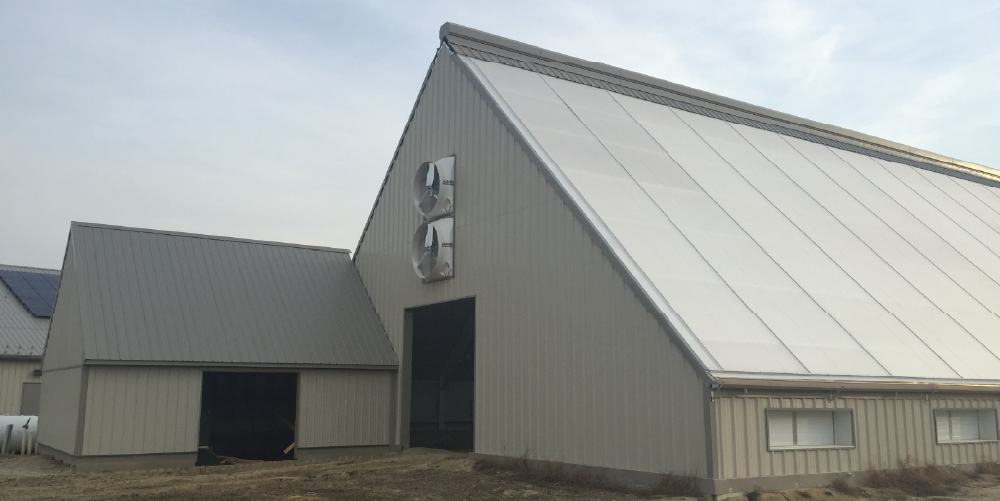
Canada was the second country in the world to formally and fully legalize cannabis, including its cultivation, possession, acquisition and consumption. Since it did so in 2018, the market has grown dramatically. Growth continued in 2019, when drinks, edibles and topicals were legalized. And even in 2020, a year plagued by the COVID-19 pandemic and related quarantines, Statista measured the Canadian cannabis market at $2.6 billion.
Straining to get Ahead
Cannabis is no longer an underground, black-market business. In fact, it’s very big business indeed. With demand suddenly through the roof, the medical and recreational cannabis industries are rushing to build new grow facilities and expand current ones just to keep up with a hungry market. However, even with the massively increased demand, cannabis is no commodity. Cultivators and cannabis entrepreneurs compete fiercely to develop stronger and stronger strains – or to unlock new balances of the compounds within strains to deliver a growing list of different desired effects. Across Canada, growers are looking to establish their competitive edge – or break through with new, better products.
A Highly Regulated Environment
Today’s cannabis cultivators are looking for an edge, and that edge begins with the environment in which the cannabis plants are grown. Cultivating market-busting cannabis requires absolute control of every environmental condition, so most growers choose indoor facilities, where a nearly tropical environment can be manufactured and maintained. Temperature needs to be controlled, regardless of whether it’s a muggy summer day or snow is piling up on the roof. Humidity and air movement also need to be precisely managed, giving enough moisture to plants without encouraging bacterial or mold growth. Powerful lighting and treated watering cycles are required to provide artificial seasonal cues to the plant, determining its phase of development and growing cycle – from seedling to growth to fruiting.
A Demanding Plant
All this management of temperature, humidity and air might seem like a lot, but it’s actually just scratching the surface. Each strain might require slightly different atmospheric conditions. Within a single grow facility, multiple different temperatures, varying levels of humidity and stages of growth likely exist next-door to each other to support the growth of different strains. This also requires extensive ceiling-mounted equipment, such as lighting systems, HVAC, MEP infrastructure, fire protection, mechanical, plumbing, electric, condensing units, watering systems and indoor blowers. All this ceiling-mounted equipment increases collateral load significantly.
As you can see, cannabis cultivation isn’t as simple as planting a seed. It demands much more of its structure than most industries. Luckily, Robertson’s vast experience in metal construction is ideally suited to outperform these demands – from structural requirements and performance characteristics to durability and cost. Let’s take a closer look.
The Perfect Match
Metal buildings – and the unrivaled features of insulated metal panel (IMP) construction, in particular – are the perfect match for cannabis cultivation. IMPs provide the entire building envelope, including the air, water and vapor barrier in a single product. IMP’s also have a built-in, foamed-in-place insulated core. So, instead of multiple trades installing multiple layers of the building envelope, a single trade can do it in a single step, reducing time, cost and exposure – and expediting dry-in times so interior trades can move in sooner. They not only withstand the consistent intense indoor humidity required in the cultivation process, but also extremes of cold, heat, rain and drought outside.
Imagine how long it would take multiple trades to install sheathing, water, air and vapor barriers, insulation and a rainscreen. Now factor in weather delays, scheduling errors and other problems. Compare that to IMP construction. Metal construction materials arrive on site pre-punched, drilled, and ready for assembly, reducing erection time by approximately 33% compared to other methods. A trained crew of four can install as many as 5,000 square feet of IMPs in a single eight-hour shift. That puts you much closer to your inaugural harvest.
Keeping Your Cool
The energy and environmental costs of running an indoor grow facility can be considerable, but with metal and IMP construction’s exceptional insulating properties and thermal uniformity, you’ll offset those costs by significantly reducing heating and cooling costs.
IMPs provide numerous other features, as well. Metal doesn’t support the growth of mold and is resistant to rust and decay, while creating a nearly airtight building envelope – keeping out pests, rodents, contaminants, and other intruders. Custom designed structures mean special drainage systems can be included, as well as recessed spaces in aisles for water faucets and easy-to-clean wall finishes – including specially formulated systems designed to stand up to routine, high-pressure washes. Metal construction is also perfectly suited to handle the increased collateral load cannabis cultivation requires.
Maximize Your Footprint
To enhance a grow operation’s profit margin, you need to make the most of every square foot of your building’s footprint. Robertson’s range of Primary Systems include Clear Span and Multi-Span framing options, allowing for column-free interiors and large, unobstructed, clear span space to support crops, water storage, processing facilities, product storage, and more. You can also explore the option of adding mezzanines and lofts to double the capacity of your building footprint. Furthermore, as your business grows, metal buildings can scale alongside, ready for a boost in demand to be matched by a boost in size.
Structures Tailored to Your Needs
Robertson metal buildings may commonly be called “pre-engineered,” but the truth is all components are custom-designed and made to order. When you contact a Robertson representative near you, we’ll consult with you about topographic conditions and site selection as well as both interior and exterior design. Your building will be custom engineered to meet both facility requirements and local building codes. When you trust your project to Robertson, you’re not only reducing the number of on-site trades and potential scheduling snafus, you’re also trusting a single source of responsibility. That means you know precisely what to expect – and precisely who to call should you ever encounter a problem.
Low Maintenance
Thanks to the unmatched speed of metal construction, your building will be erected before you know it. Once it is, the news gets even better, because it will be virtually maintenance free. Metal walls and sloped metal roofing are self-cleaning, requiring nearly no upkeep, which further reduces your operating costs. And your materials are backed by Robertson’s warranties.
Don’t let the others get ahead. Get in touch with a nearby Robertson representative today to start your cannabis cultivation project. The choice you make today could be the start of The Canadian cannabis industry’s next big name!
Robertson 2020 Photo Award Winners

We are proud to announce Robertson’s 2020 Photo Award Winners! The quality of submissions continues to raise the bar for this competition and we are thrilled to see such design and innovation within our industry. Congratulations to all of our winners!
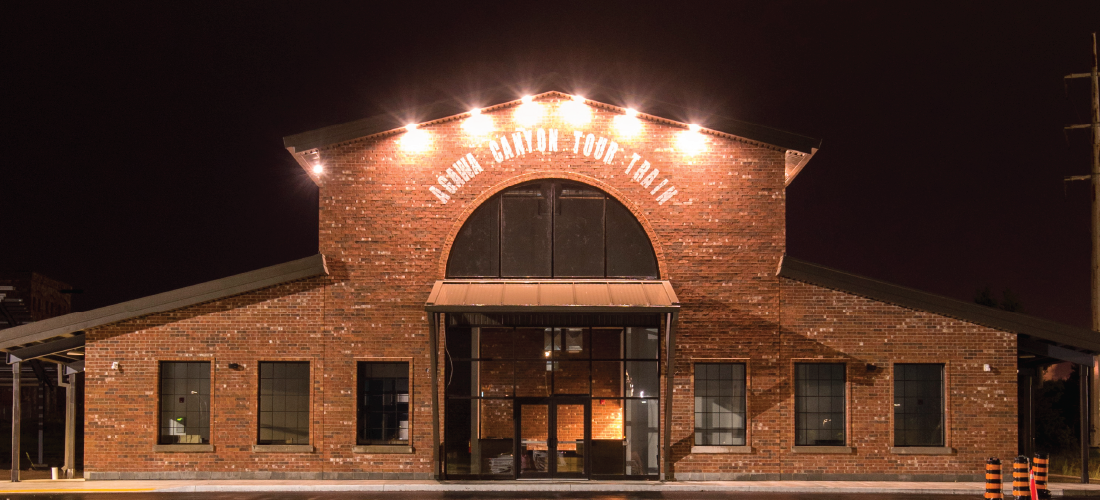
Robertson’s 2020 Building of the Year
The winning project is the Train Station by Superior Industrial Services in Sault Ste. Marie, Ontario.
This project is located in the Historical Canal District in Sault Ste Marie. The builder chose finishes that blend with the existing structures and incorporated repeating arched windows to mimic the original Gothic/Romanesque Revival style of the area as much as possible, while building on Robertson’s frame. This project is divided into four main areas. The first of which is The Train Station. There is a ticket desk, Employee offices and a waiting area for rainy days. The second area is an interactive gallery and retail space. The third area is a local craft 30 barrel brewery. The final space is home to a pub which seats over 100 people. Adjacent to these areas, is an outdoor rink with refrigeration that has its own Zamboni room and change rooms for the players to use.
- Framing: Multi-Span Building, Double-Slope with Straight Columns
- Total square footage: 20,918
- Building sizes:
- Building 1: 12,798 sq. ft.
- Building 2: 8,120 sq. ft.
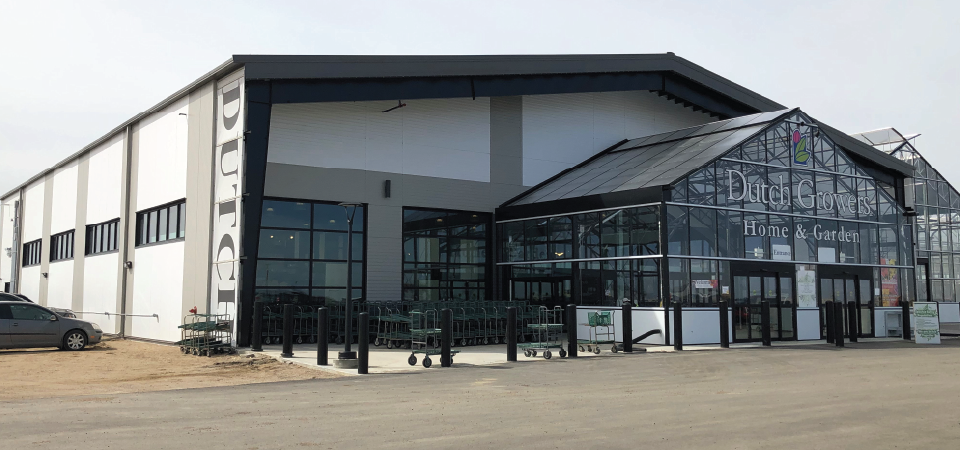
Agricultural Category Winner
The winning project is Dutch Growers New Garden Centre by Westridge Construction in Regina, Saskatchewan.
This two-building project is a commercial garden centre complete with greenhouses and a warehouse. The main retail area consists of a 24’ high building for retail sales along with offices and a mezzanine level. Previously this area of land was a golf driving range and the owners purchased the property in 2019 with design commencing in the fall of the same year and finalized it in the spring of 2020.
- The total square feet of this project is 14,010
- Framing: Clear Span Building, Double-Slope with Straight Columns
- Wall panel: CF Mesa Embossed in Solar White, Charcoal Gray and Ash Gray
- Roof panel: Double-Lok in Ash Gray
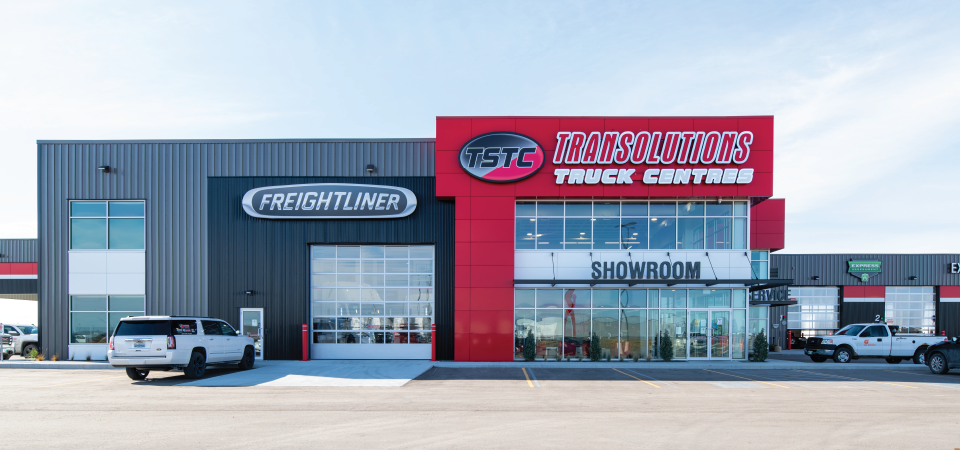
Automotive Category Winner
The winning project is TSTC Solution Truck Centre by Thomas Design Builders in Winnipeg, Manitoba.
This truck center is a state of art 82,000 square foot Freightliner dealership consisting of sales offices, express assessment, service shop, and parts. The project consists of three building and includes Pre-engineered buildings and an inverted pre-engineered structure with a conventional flat roof system. The building also has a 2nd floor structure provided by Robertson. ·
- Framing:
- Clear Span Building, Double-Slope with Straight Columns
- Multi-Span Building, Single-Slope with Straight Columns
- Wall panel: AVP and PBC in Charcoal Gray and Black
- Roof panel: Double-Lok and Galvalume
- Building sizes:
- Building 1: 31,440 sq. ft.
- Building 2: 12,155 sq. ft.
- Building 3: 10,500 sq. ft.
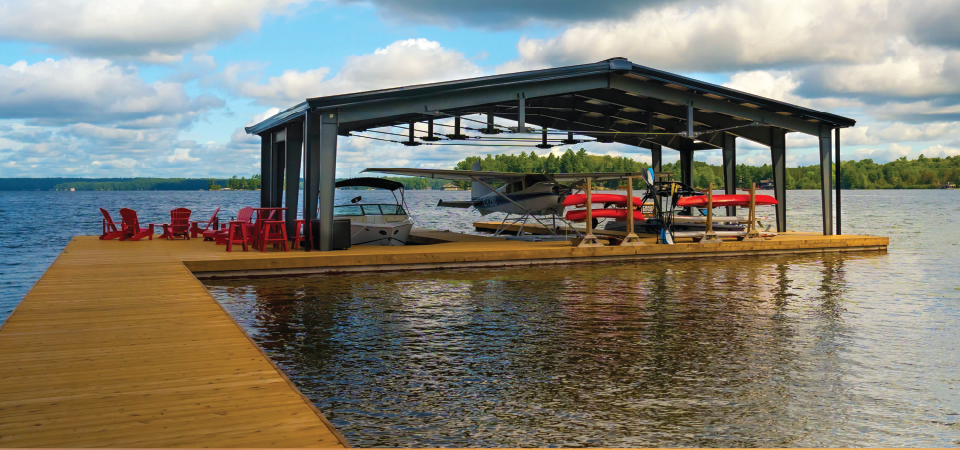
Aviation Category Winner
The winning project is the Dock Hangar by Kodiak Steel Buildings in Sarasota, Florida.
This winning aviation project is not your average hangar. It was built on Rock and Timber Cribs and is situated 150′ off the shore on the water. It was designed with additional rod bracing to reduce kick-out forces. This hangar was featured on the February issue of Our Home Magazine.due to its uniqueness. ·
- Total square footage is 2,200 sq ft.
- Framing: Clear Span Building, Double-Slope with Straight Columns
- Roof panel: Batten-Lok in Coal Black
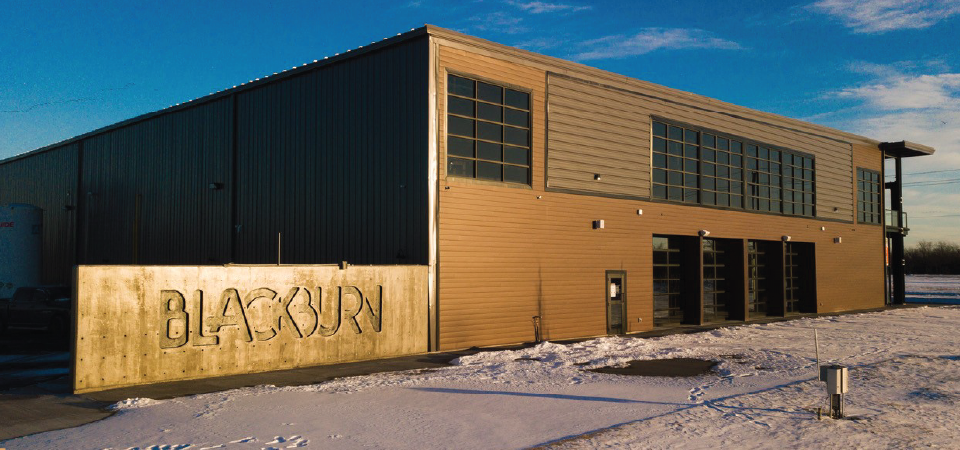
Commercial Category Winner
The winning project is Blackburn Brewhouse by Design Construct Solutions in St. Catharines, Ontario.
This project is an interesting mix of the craft brewing culture. This facility was built to be an experience and a brewing machine, with everything from interactive entertainment to dining, all while producing incredible amounts of contract beer brewing. ·
- Total square feet:
- Framing: Multi-Span Building, Single-Slope with Tapered Columns
- Wall panel: PBR in Charcoal
- Roof panel: Double-Lok in Galvalume
- Building sizes:
- Building 1: 7,200 sq. ft.
- Building 2: 21,600 sq. ft.
- Building 3: 4,800 sq. ft.
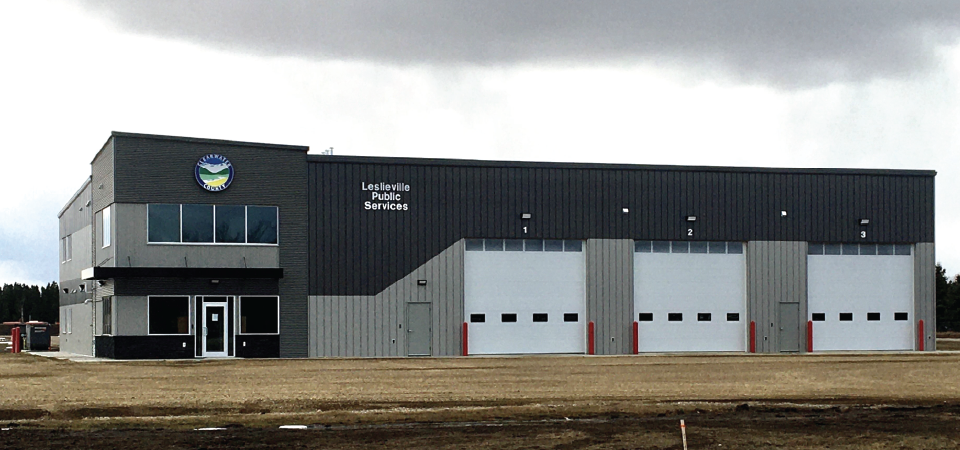
Government Category Winner
The winning project is Leslieville Public Services by Camdon Construction in Red Deer, Alberta, a combined fire hall and public works facility.
- Framing:
- Multi-Span Building, Single-Slope with Tapered Columns
- Multi-Span Building, Single-Slope with Straight Columns
- Wall panel: AVP in Ash Gray and Charcoal Gray
- Roof panel: Double-Lok in Galvalume Plus, with Robertson’s Thermal System
- Building size: 9,600 sq. ft.
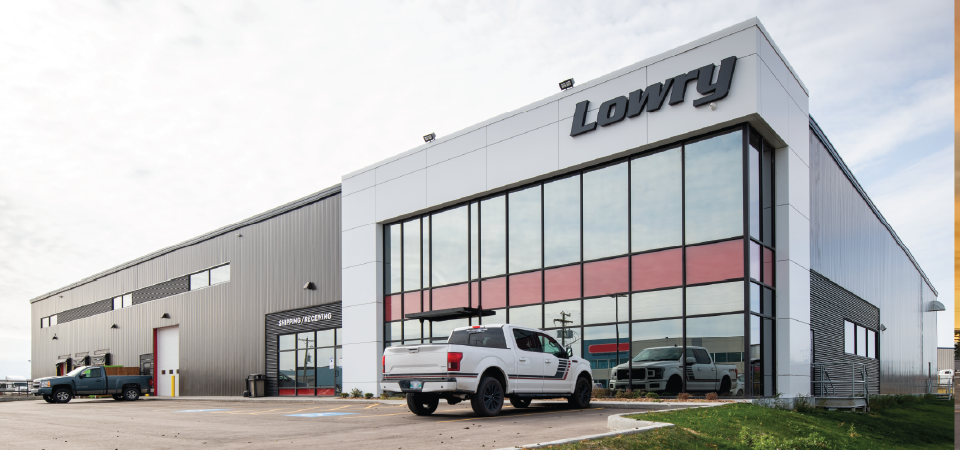
Manufacturing Category Winner
The winning project is Lowry Manufacturing by Thomas Design Builders in Winnipeg, Manitoba.
This is a 24,840 sq. ft. warehouse with a 3,000 sq. ft. office area. The building also has a 3,000 sq. ft. second floor mezzanine.
- Wall panel: FW-120, AVP, PBU and PBR in Charcoal Gray and Coal Black
- Roof panel: Double-Lok in Galvalume
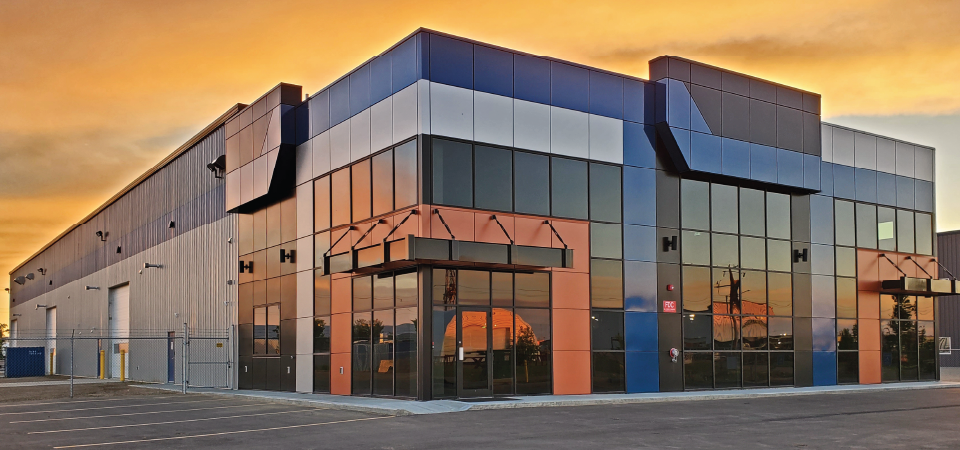
Office Category Winner
The winning project, a new manufacturing and office facility, is Rapid Design Group by Camdon Construction in Red Deer, Alberta.
- Total sq. ft.: 18,370
-
- Framing: Clear Span Building, Single-Slope with Tapered and Straight Columns
- Wall panel: AVP in Ash Gray
- Roof panel: Double-Lok in Galvalume
- Building sizes:
- Building 1: 15,750 sq. ft.
- Building 2: 2,800 sq. ft.
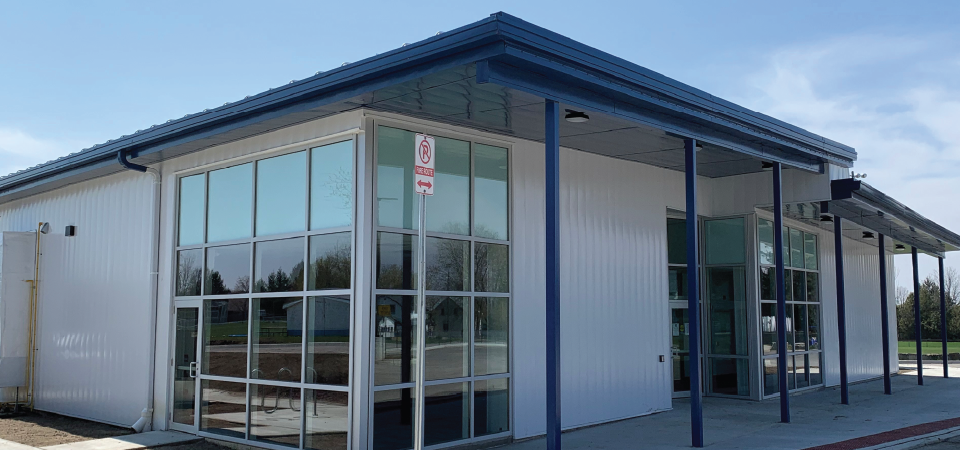
Recreation Category Winner
The winning project is the Thorndale Recreation Centre by MCI Design Build in London, Ontario.
This project is a community recreation facility complete with multi-use gymnasium, community meeting rooms, administration offices, storage areas, washrooms, change rooms and a kitchen. It is made up of 5 buildings for a total of 16,997 square feet.
- Framing: Clear Span Building, Single-Slope with Tapered Columns and a lean-to
- Wall panel: FW-120 and PBR in Solar White and Polar White
- Roof panel: Double-Lok in Galvalume Plus
- Building Sizes:
- Building 1: 7,438 sq. ft.
- Building 2: 4,242 sq. ft.
- Building 3: 2,100 sq. ft.
- Building 4: 1,723 sq. ft.
- Building 5: 1,495 sq. ft.
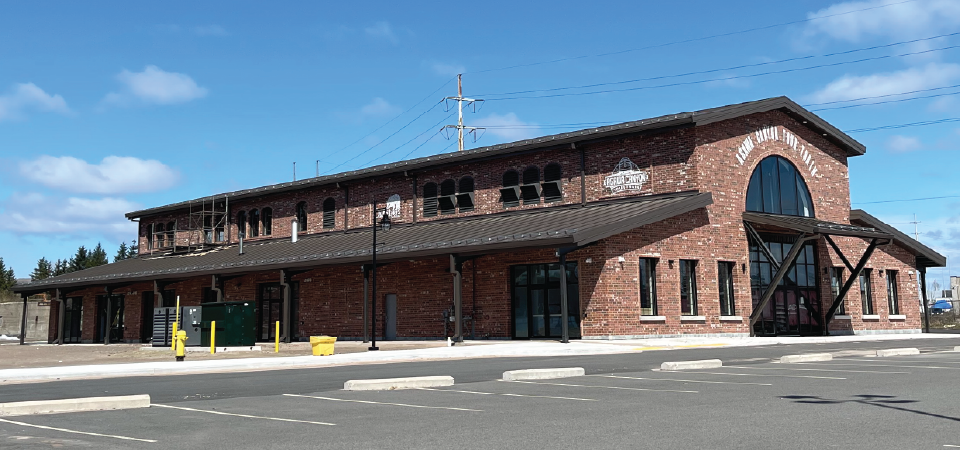
Retail & Restaurant Category Winner
The winning project is the Train Station by Superior Industrial Services in Sault Ste. Marie, Ontario. This project also won the 2020 Robertson Building of The Year.
- Framing: Multi-Span Building, Double-Slope with Straight Columns
- Total square footage: 20,918
- Building sizes:
- Building 1: 12,798 sq. ft.
- Building 2: 8,120 sq. ft.
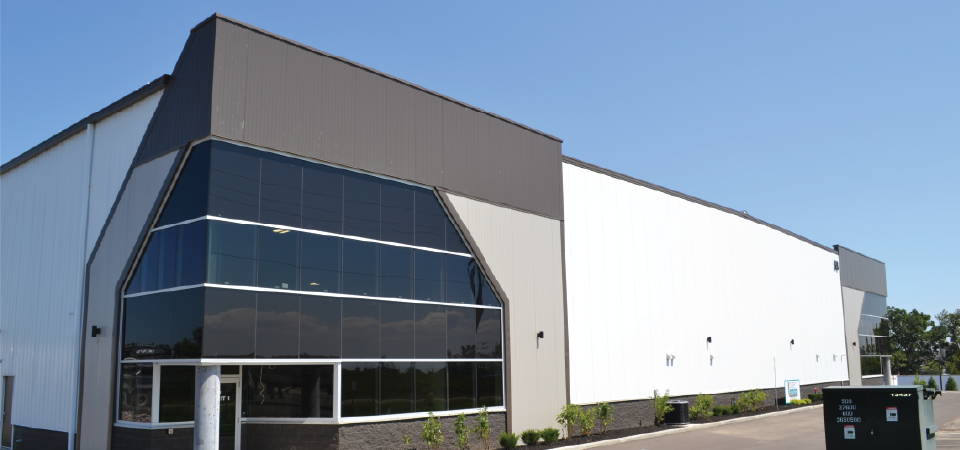
Storage Category Winner
The winning project is Euroline Appliance Warehouse by Lanca Contracting in Brantford, Ontario.
- Framing: Multi-Span Building, Double-Slope with Tapered Columns
- Wall panel: CF Mesa in Solar White, Burnished Slate and Ash Gray
- Roof panel: Standing seam roof in Galvalume Plus
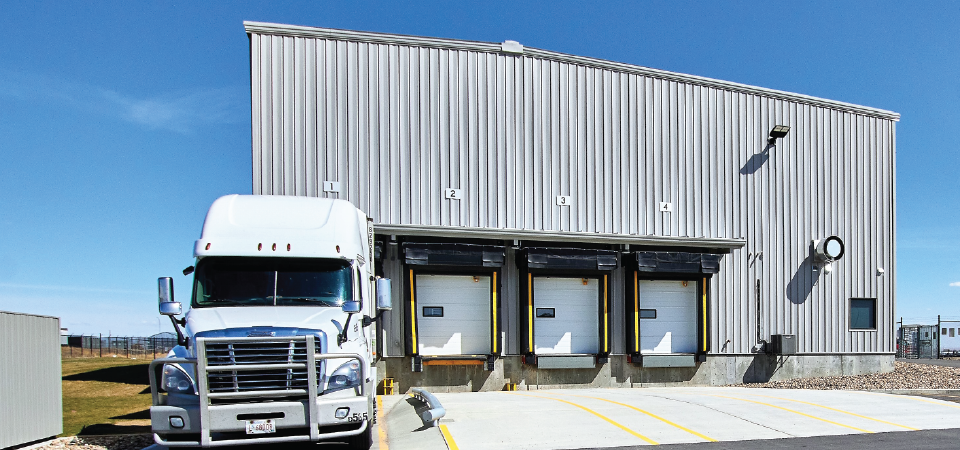
Warehouse and Distribution Category Winner
The winning project is FedEx Ground by Advance Design and Construction in Medicine Hat, Alberta.
This is a package shipping and receiving depot designed to accommodate a high quantity of shipping packages in a short order turn around.
- Framing: Clear Span Building, Double-Slope with Straight Columns
- Multi Span Building, Single-Slope with Tapered Columns
- Wall panel: AVP in Ash Gray
- Roof panel: Double-Lok in Galvalume Plus
Architects & Archetypes: Understanding the Roles of Architects and Engineers
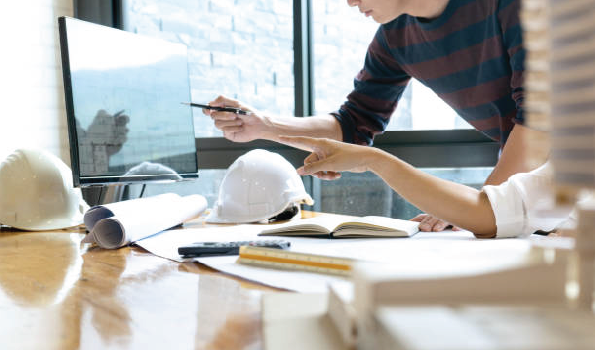
Collaboration determines the success of any construction project. Dozens of different teams, specialists and tradesmen can be involved, each with their own concerns and responsibilities. It can sometimes be unclear who does what, who is responsible for what, and who should be involved at which point.
Today, we’re going to unfold these complicated connections, focusing on the roles of architect and engineer. We’ll also investigate cutting-edge methods to make projects go smoother, maximize profit margins, and minimize schedule changes by facilitating productive collaboration between architects, engineers and other stakeholders earlier in the process.
Who Does What?
You may be familiar with the notion of people being either more left- or right-brain dominant. If so, you have a good grasp on the fundamental difference between the characteristics and responsibilities of architects as opposed to engineers. Left brain dominance is associated with thinking, analytical processing, math, logic, and science, while right brain dominance is more feeling, creative, artistic, and free flowing. Of course, no one is entirely one or the other, and exceptions exist, but architects tend to be more right-brained while engineers are more likely to be left-brained.
Right-Brain: The Architect’s Vision
Most projects begin when an architect meets with a client, striving to understand their needs, goals and ideas. The architect then grows this into a grand, artistic vision which addresses those needs while elegantly integrating form and function in a surprising, impressive, memorable way. This vision is typically expressed in the form of a full set of architectural drawings comprised of floor plans, roof plans, elevations, sections, and perspective drawings.
This, of course, requires a good amount of left brain work as well. He or she must design within local codes and municipal limits, be aware of safety regulations and remain current on both technical innovations and city laws.
Once the architect has dreamed up a stunning and potentially groundbreaking building, it all exists on paper. But that doesn’t mean it’s constructible. That’s where engineers come in. Ideally, architects provide the following for an engineer’s review:
- Blueprints
- Floor-to-floor heights
- Slab edge locations
- Cavity depths
- Ceiling interstitial spaces
- Parapet locations and heights
- Unique architectural features
- Design areas subject to changes
Left-Brain: The Engineer’s Reality
Engineers tend to be the left-brained type, using math, science, logic, and visualization to fully understand the constructability and feasibility of an architect’s design. Using the architect’s preliminary drawings and the information listed above, an engineer designs a structure to support the building’s live, dead and environmental loads.
The engineer ensures the design is safe, meets building codes and specifies not only the structural materials and members, but details such as electrical, heating, ventilation, air conditioning and plumbing systems. On larger projects, each of these might have their own engineer assigned. Just as the architect provided information to the engineer, the engineer in turn provides the architect with crucial information:
- Structural implications of proposed openings and floor spans
- Size and locations of columns
- Locations and types of expansion joints
- Locations of shear walls or other seismic resistance mechanisms
- Possibilities for improving efficiency
Whole Brain: Collaboration
Until now, construction has mostly been a linear process: Plans move from a client meeting and resulting architect vision to an engineer review and construction itself. Today, though, technology is making it possible to streamline this in unprecedented ways. It can be hard to visualize all the places where a pipe might accidentally intersect a structural member or how columns might block the flow of hallway traffic when you’re working on paper or correlating various plans and drawings.
These coordination issues or “clashes” as they’re known, are now easier to predict than ever. The old way meant changes or unforeseen problems resulting in major problems in a project’s budget and timeline. Today, with the advanced software platforms and technology available, it’s possible to fully visualize a project before breaking ground – eliminating clashes before they become expensive problems.
The RBS Advantage
One of the biggest advantages for architects working with Robertson building projects is proprietary estimating software program, RBS. In the initial design and concept stages, architects can use the platform to present multiple design and pricing options to the entire team. With easy access to a wide variety of designs that incorporate all the necessary parameters and accessories, collaboration becomes much easier and architects, engineers, and the entire team can have the confidence of knowing the final design has maximum efficiency built right in.
When Architects & Engineers are Required
There are legal guidelines in place which dictate which projects need an architect’s involvement and sign-off versus those which can simply be reviewed and stamped by an engineer. Each province has its own Provincial Architectural Association with different requirements to practice.
Small, simple projects may not require the involvement of an architect or engineer. While many of the rules, laws and codes differ from state to state and municipality to municipality, the primary considerations are the classification of the building, its height and area. According to Part 9 of the Building Code, commercial project drafting work does not have to be completed by a professional. It is often performed by qualified technicians under the direction of the project engineer or architect. The structural design, on the other hand, will likely require direct involvement by an engineer. Check with your local permit office to be sure, but this gives a general of idea of what is required:
Requires Engineer Stamp
Single-story gas stations
Mechanic shops
Car washes
Small quick-service restaurants
Small single-story retail and office space
Requires Architect Stamp
Buildings over one story tall
Large or multi-story retail space
Large restaurants and offices
Big box stores, malls, etc.
Other instances in which an architect is certainly a wise choice is when repurposing a building designed for another use or when municipalities enforce more stringent design styles and materials.
Choose Wisely
Regardless of the size, scope and complexity of the project, the most important decision is choosing the right partner for you. Don’t let the sole decision-making factor be price. Your partner should be infinitely curious about your needs, goals, and concerns. They should be as enthusiastic and driven to realize your vision as you are. And they should be able to design and build within your budget.
If you have questions or concerns about finding the right architect, engineer or firm, get in touch with a Robertson representative near you. We have decades of experience working alongside architects and engineers with a wide spectrum of expertise and can help identify those who are most likely to best meet your unique needs.
Retrofit Buildings for Self-Storage
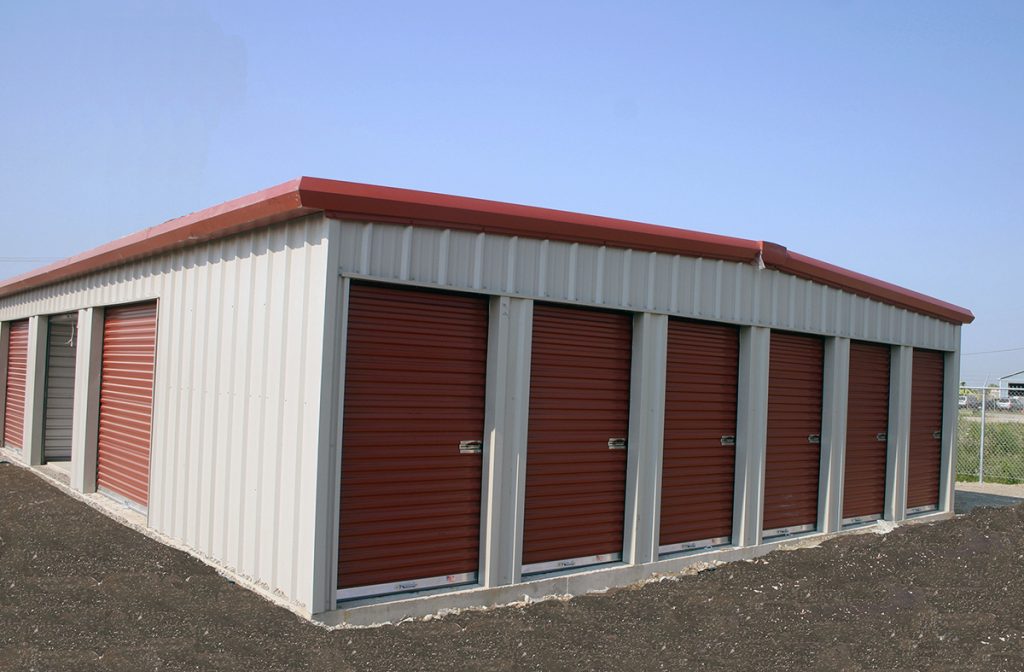
The Perfect (Retro) Fit
The self-storage business is booming in Canada. When the housing market goes bull, so does self-storage, and both have seen a healthy, steady incline – especially in urban and metropolitan areas. Even in more rural locales, self-storage is on the rise as “toy storage” for vacationers’ boats, RVs, ATVs and snowmobiles. Facilities are getting more expansive too. U-Lock Mini Storage Group president Robert Madsen explained in a recent Inside Self-Storage article that the 40,000-75,000 square foot facilities of yesterday have ballooned. “Today they can be 100,000, 250,000 or, in an extreme case, 500,000 square feet of net rentable space,” he said.
Locked Out
Demand may be up, but it isn’t all rosy for self-storage groundbreakers. There are several barriers to entry. Land costs are at an all-time high, and overall costs aren’t much better. As Madsen explains, “A modern, multi-story site ranges from $120 to $230 per square foot … far from the $55 to $70 of only a few short years ago.” Those are simply hard costs. There is also the much grayer, unpredictable prospect of rezoning. Apple Self Storage vice president David Allan points out “Rezoning is a much riskier process that has no outer time limit for completion… Even getting a site-plan agreement completed with the city of Toronto … take[s] 18 months.”
On top of that are Development Cost Charges, or DCCs. Paid by the developer, these are municipal taxes designed to offset the costs of continuing upgrades to things like local infrastructure, public transportation and social programs. But according to Allan, they’ve been reported to reach as high as $49.32 CAD per square foot – amounting to millions of dollars for the largest projects. These charges must be paid before construction begins. It’s all intended to be for the greater good, but as you can imagine, DCCs often stop a project in its tracks.
Robertson Has a Solution
There is a straightforward way to circumvent many of these barriers to entry. Land and construction costs can be offset by retrofitting an existing structure into a self-storage facility. A conversion project is much more cost-effective than buying, clearing, zoning and building from the ground up. As DBCI (sister brand of Robertson) Sales Representative Barry Nilson explains, “Because of the emergence of online sales, a lot of bricks and mortar, consumer outlets are no longer as popular.” That means across the country, you can find large, solid structures for sale in prime areas – ideal for converting into the self-storage that’s in such high demand.
Yesterday’s JC Penney, Kmart, gym, grocery store or even office and manufacturing space can be converted into self-storage. In fact, Walmart recently announced the closing of six stores in Alberta, Ontario, and Newfoundland.
Robertson specializes in providing a turnkey self-storage conversion project. From roll-up frames and door headers to modular wall and hallway systems, Robertson’s single-source, comprehensive, coordinated systems and depth of experience streamline the process from start to finish.
Due Diligence
At Robertson, we can handle quoting, delivery and speedy installation, but we highly recommend you attend to a couple items outside our area of expertise:
- Conduct a Feasibility Study
Before you invest substantial resources in a retrofit, consult the experts to learn about traffic in the immediate area, disposable income levels, competing self-storage facilities and expected community growth. Their findings can also help decide which unit mix is most appropriate. A college town full of apartments and dorms needs small lockers, while a sprawling, wealthy suburban area will rent larger units for furniture, heirlooms and even vehicles.
- Examine the Building’s Condition
A thorough inspection of your prospective property is essential to ensure it’s up to code, is structurally sound, has a solid roof and HVAC equipment in good condition.
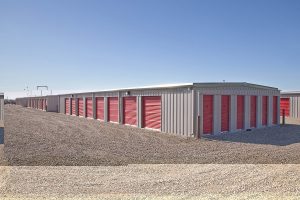
Planning Ahead
Once you have your feasibility study in-hand, we can create an ideal blend of unit types and sizes, then design the floorplan to make the most of every square foot. If the building’s height allows for it, we can also consider the construction of a second-level mezzanine. Typically, at least 20’ of unimpeded height is needed for such a mezzanine, but it can essentially double your rentable space. Once a plan is approved and materials arrived, installation is typically fast and efficient – covering up to 8,000 square feet per week.
As a comprehensive manufacturer, supplier and installer, Robertson can also supply precisely what your future business needs to make it as modern and attractive as it is efficient and durable. With custom coatings, you can choose any color for your materials – including your precise brand colors. Furthermore, kick plates, corner guards, column wraps and wainscoting can protect your doors, walls and hallways from the scrapes, bumps and accidents that are all but inevitable in self-storage facilities. For lower clearance roofs, swing doors are an excellent choice. And to ensure the security of your tenants’ possessions, we offer burglar bars, mesh panels, and a selection of locks and latches.
It’s also smart to consider other value-added additions, like exterior updates to heighten your facility’s curb appeal and new restrooms. You could also include a small retail area for customers to buy essential supplies they may have forgotten or need, like cardboard boxes, tape, furniture blankets, stretch wrap, packing peanuts, dolly rentals and even pain relievers for tenants who might have overdone it.
Overhaul the Old U-Haul
Another trend sweeping the nation is renovation of older self-storage facilities. While they may not be much to look at, existing storage facilities do not face new construction challenges like land costs and zoning. With a contemporary facelift via clean new white Robertson metal panels, new doors, updated fencing and clean, bright LED lights, such a facility can feel like new. Robertson can streamline such an update too.
Ready to lock-in your project? Talk to a Robertson representative about tackling a conversion project today.



 Let’s talk about building. But let’s not talk about where, when or what you want to build. Makes sense, right? Actually, it makes more sense than you think. Stay with me.
Let’s talk about building. But let’s not talk about where, when or what you want to build. Makes sense, right? Actually, it makes more sense than you think. Stay with me.